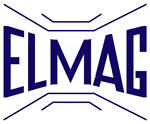EMF Technology
What Is EMF — Electromagnetic Metal Forming?
Intense electromagnetic pulses can be used to induce strong electric currents in electrically conductive work pieces. The interaction of the electromagnetic field and the induced currents generate forces sufficiently large to form the work piece material beyond its yield point.
The process is generally referred to as “High Energy Rate Metal Forming” or “Electromagnetic Metal Forming” (EMF). Although the process is called “Metal Forming,” it is mostly used as an “Assembly” process.
The application of the process is not limited to any particular industry. It can be successfully used wherever components need to be joined, assembled, or formed to specific shapes. The “electrically conductive work piece” can be a variety of components or products. For example:
Anodized Tubes for Aircraft Control Rods


Guide Rings for Projectile Banding

Housings for small Electric Motors or Fuel Pumps


Back Shells for EMI-Proof Electrical Connectors

In Electromagnetic Metal Forming, there are no moving tools which push, press, or move the work piece material. The force or electromagnetic pressure pulse (generally 50 to 100 microseconds long) imparts kinetic energy into the work piece. The work piece is rapidly accelerated, reaching plasticity. This results in intimate contact between the work piece and mating part of the assembly. Even if the mating part is irregularly shaped or has excessive tolerances, the work piece will keep moving until it conforms precisely to the mating parts. Depending on the electrical conductivity of the work piece material, there is little or no heat generated in the work piece.
Application of the EMF Process
The past has shown that successful introduction of the process is mostly determined by either economics or its ability to perform tasks conventional processes can’t do. The physical sizes of the products to be formed or assembled is, to a large extent, dictated by the cost of the EMF equipment. Therefore, the process is mostly used, but not limited, to assembling:
- Small to medium size (0.2 to 10 inches diameter) round or tubular work pieces, with wall thicknesses in the area of 0.010 to 0.250 inches
- Work piece materials that are relatively good electrical conductors such as mild steel, aluminum or copper. (Non-electrical materials can be formed with so-called drivers, the material of which can be copper or aluminum.)
